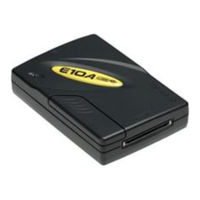Renesas SuperH Family E10A-USB Manuals
Manuals and User Guides for Renesas SuperH Family E10A-USB. We have 8 Renesas SuperH Family E10A-USB manuals available for free PDF download: User Manual, Addendum
Renesas SuperH Family E10A-USB User Manual (254 pages)
Multi-core Emulator
Brand: Renesas
|
Category: Computer Accessories
|
Size: 2 MB
Table of Contents
Advertisement
Renesas SuperH Family E10A-USB User Manual (205 pages)
Emulator
Brand: Renesas
|
Category: Computer Hardware
|
Size: 5 MB
Table of Contents
Renesas SuperH Family E10A-USB User Manual (66 pages)
SuperH Family E10A-USB Emulator Renesas Microcomputer Development Environment System
Brand: Renesas
|
Category: Computer Hardware
|
Size: 0 MB
Table of Contents
Advertisement
Renesas SuperH Family E10A-USB User Manual (59 pages)
SuperH Family E10A-USB Emulator
Brand: Renesas
|
Category: Computer Hardware
|
Size: 0 MB
Table of Contents
Renesas SuperH Family E10A-USB User Manual (56 pages)
Renesas Microcomputer Development Environment System SuperH Family / SH7750 Series E10A-USB for SH7760 HS7760KCU01HE
Table of Contents
Renesas SuperH Family E10A-USB User Manual (54 pages)
Brand: Renesas
|
Category: Computer Hardware
|
Size: 1 MB
Table of Contents
Renesas SuperH Family E10A-USB Addendum (54 pages)
E10A-USB Emulator
Brand: Renesas
|
Category: Computer Hardware
|
Size: 0 MB
Table of Contents
Renesas SuperH Family E10A-USB Addendum (43 pages)
E10A-USB Emulator
Brand: Renesas
|
Category: Computer Hardware
|
Size: 0 MB







